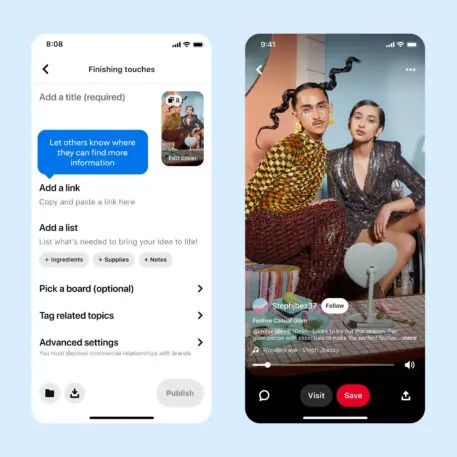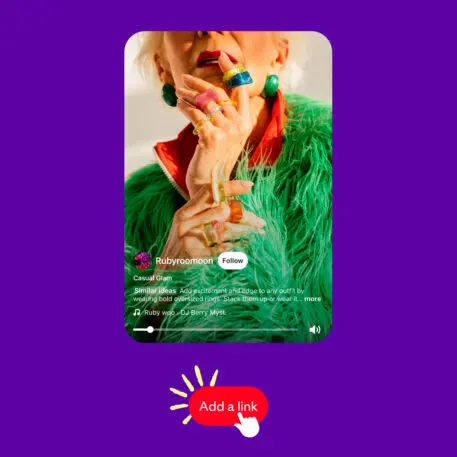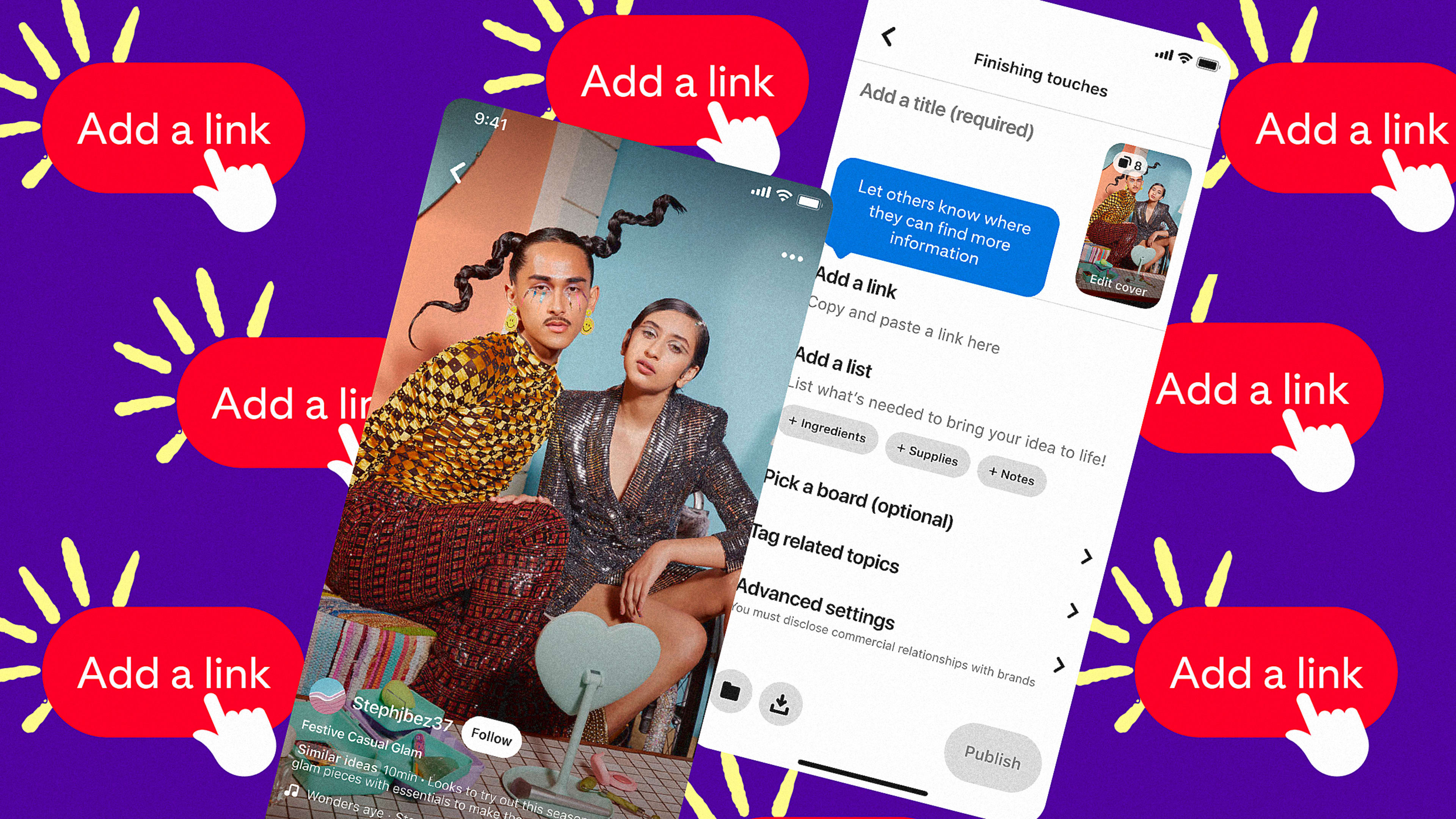There are two ways to look at the following news. One, it makes it easier to sell things; two, it makes it easier to buy things. Whichever camp you find yourself in, the gist of it remains the same: The internet has become one giant shopping cart, and you needn’t leave your couch to checkout.
The news in question is seemingly innocuous. Pinterest is launching “links in all Pins.” Until now, only those with a business account could link to a specific page. But starting today, anyone with access to the internet can do the same and add external links to images, videos, and even Pinterest TV livestream, allowing them to reach a bigger audience and drive more traffic to the website of their choosing.

In isolation, the update is actually helpful for both Pinterest creators and consumers. The former can promote their ideas, brand, and products more easily; the latter can source ideas, brands, and products more easily. If you’re a brand, for example, you can now create a video promoting your new nail polish, and lip gloss, and sunglasses, and belt; you can tag each product; and you can add a separate link to your website for more information.
If you’re a consumer, you can now search for nail polish art, or styling tips for belts, and once you find that perfect way to wear that belt you don’t have, you can simply click through and purchase it. “I use Pinterest a lot to research my tattoos, and I got a tattoo a couple of weeks ago. I found the image on Pinterest and I would’ve loved to have been able to click out and see what artist has actually done that tattoo,” says Pinterest’s North American lead for publishers, Jeremy Jankowski. “How do we fill that gap is where our head’s at.”
This is all well and good, but in the bigger context of the internet, the update is yet another nail in the coffin of innocent browsing, and yet another push toward buying. Indeed, it’s hard to find a corner of the internet that isn’t trying to sell you stuff. Facebook launched as a social network but opened a marketplace in 2016. Instagram started as a photo-sharing platform, added shopping features in 2016, and shoppable Stories in 2018. TikTok has TikTok Shop. YouTube has Youtube Shopping.

In this regard, Pinterest was actually quite far behind, even though, according to Jankowski, the platform’s link-sharing ability has always been part of Pinterest’s DNA. From the very start, he says, publishers could link to their magazines and bloggers could link to their sites. “Pinterest drove 30% of our traffic,” he says, in reference to Refinery 29, where he previously worked in sales and brand partnerships. “It’s always been this buddy to anyone that has an e-comm or a media company, or if you’re a creator and you want to generate a following.”
But linking out to an article is not the same as linking out to a consumer product. That push for e-commerce came in 2021, with the grandly titled “Idea Pin.” This let anyone with a business account record multiple videos and add images, lists, and text in a single Pin, using publishing and editing tools native to the platform.
Does this mean that Pinterest has evolved from the ultimate inspiration hub to yet another shopping platform? Does the extra monetization channel dilute the Pinterest experience by making it even more transactional? For Jankowski, it all goes back to the platform’s mindset and its ability to help people take their projects further. “When I go to Pinterest, I’m actively there to do something. I’m going to redecorate my living room, I’m going to redo my kitchen, I’m looking for a spring outfit,” he says. “Pinterest has always been this hub of inspiration and because you use it for that, you’re further down the purchase funnel.”
That may be the case, but the point of inspiration is to get a pulse on something, then make it your own. If the world’s most famous mood board just lets you click and buy what’s on your screen, aren’t we condemned to live in a mood board off-screen, too?
Maybe that’s all moot, because we already do.
Recognize your brand’s excellence by applying to this year’s Brands That Matter Awards before the early-rate deadline, May 3.
